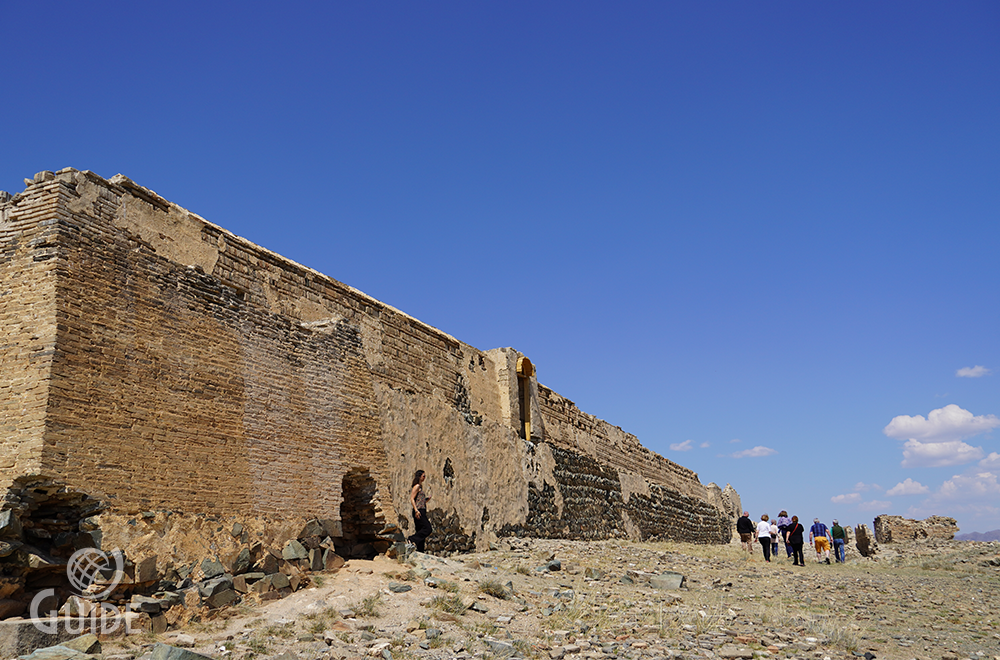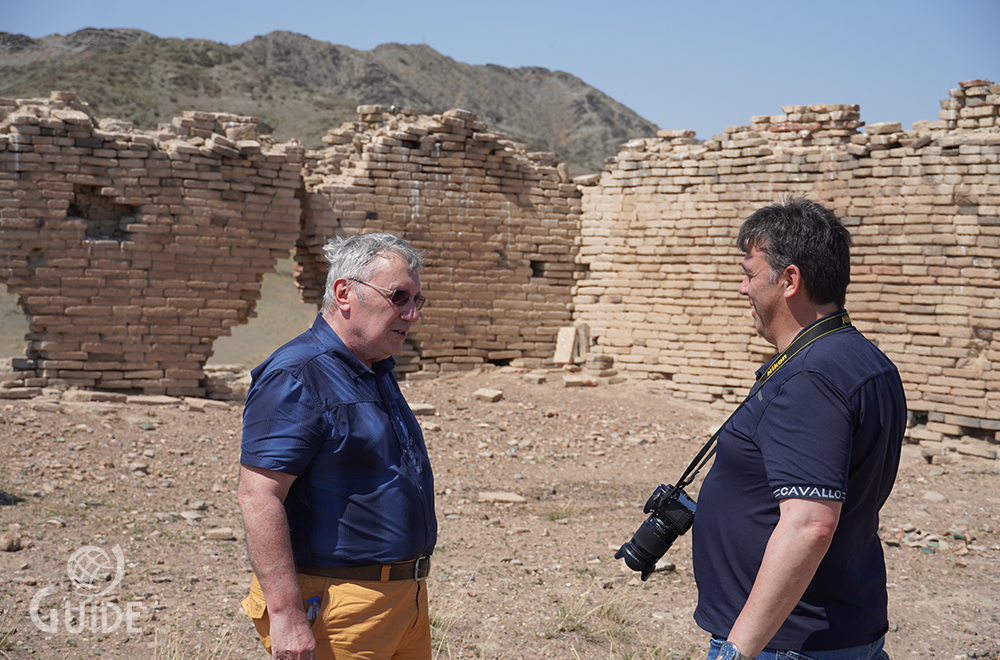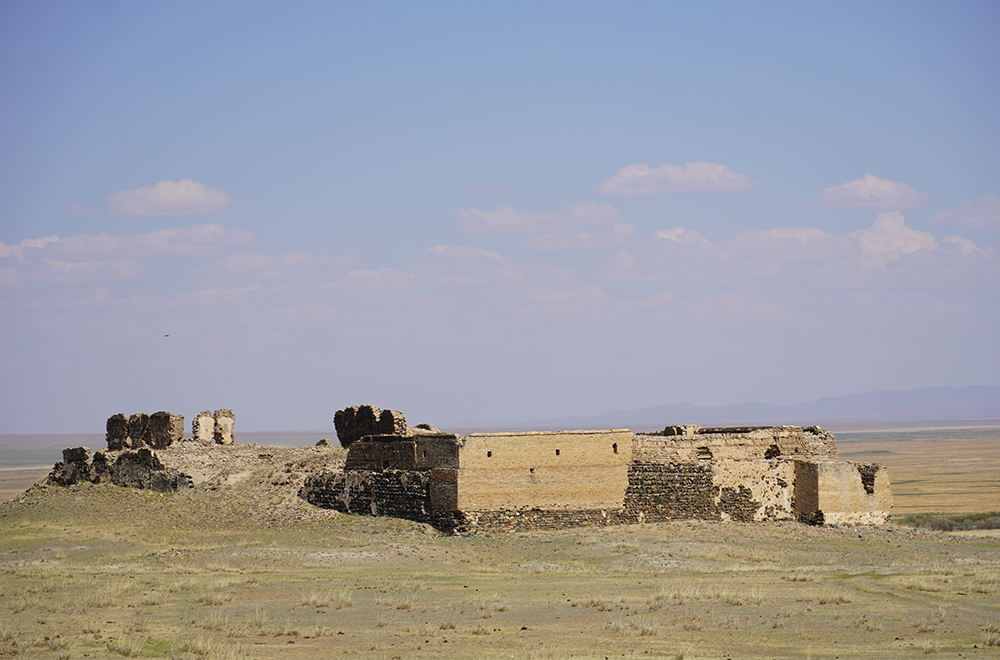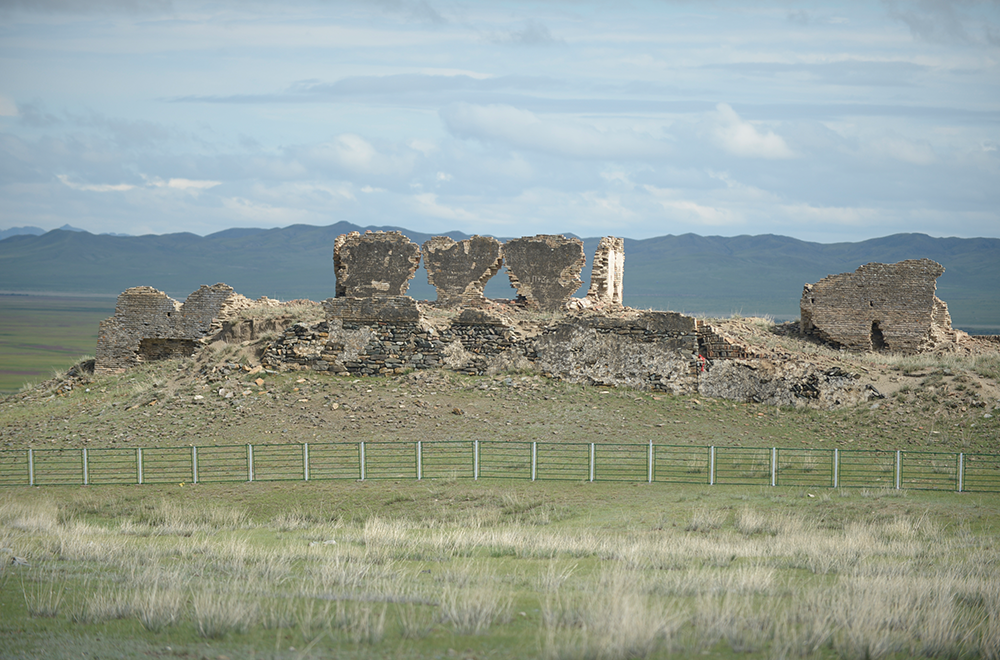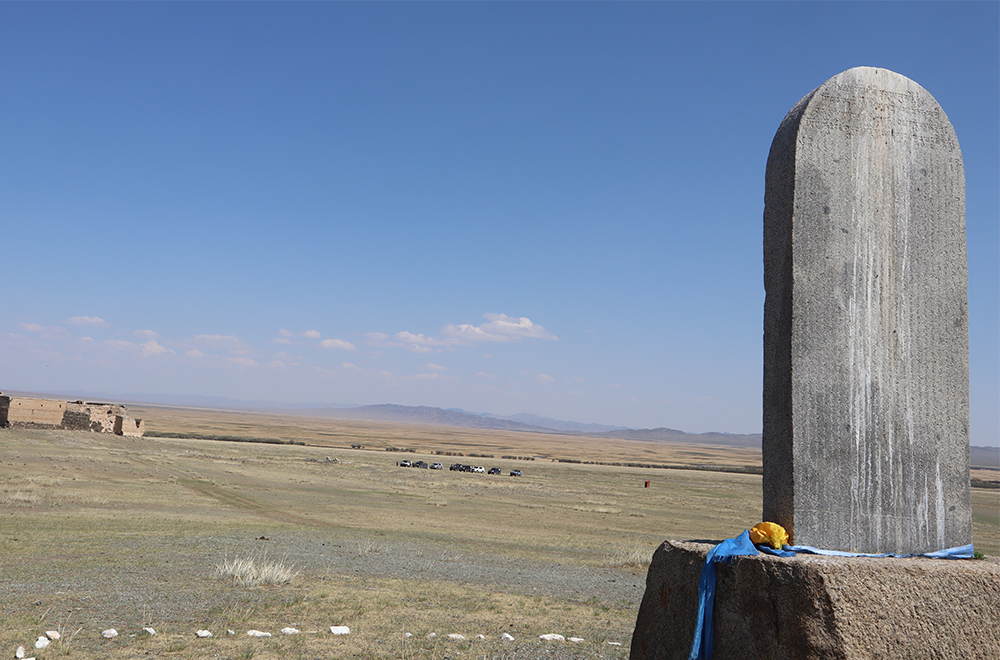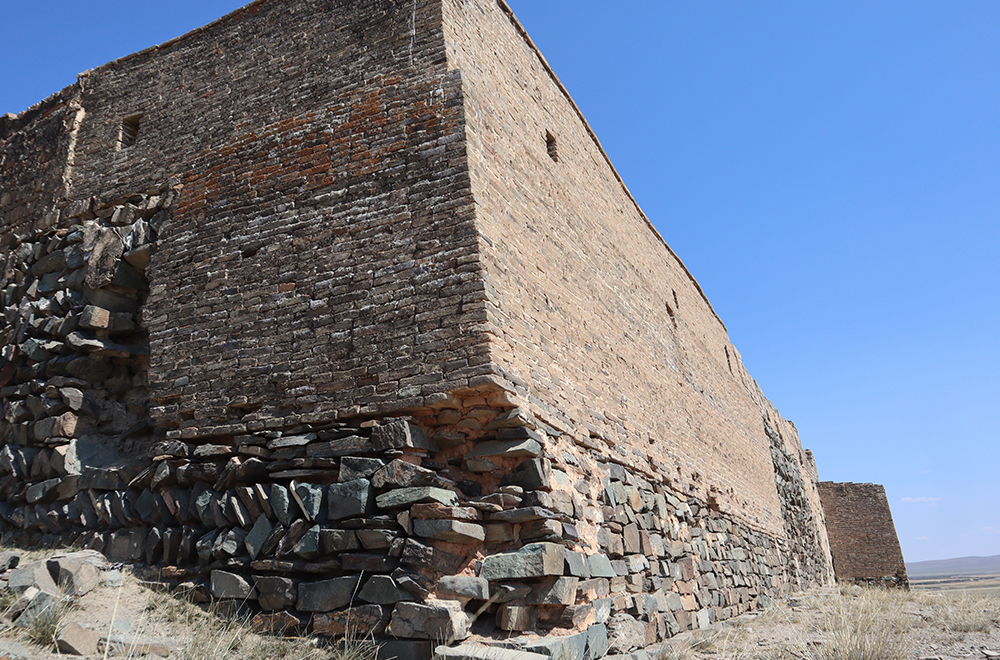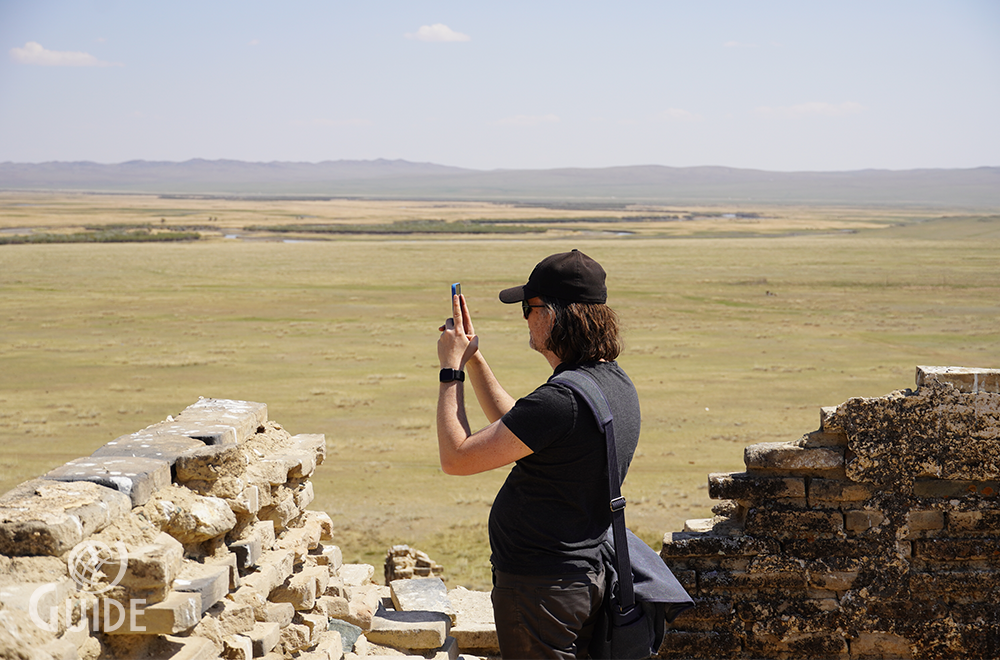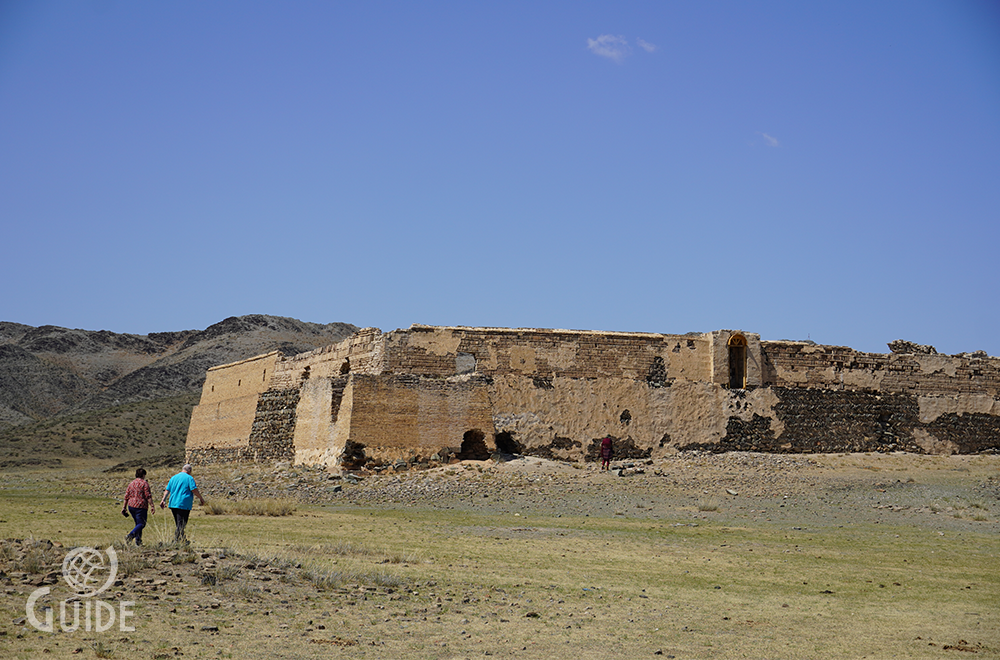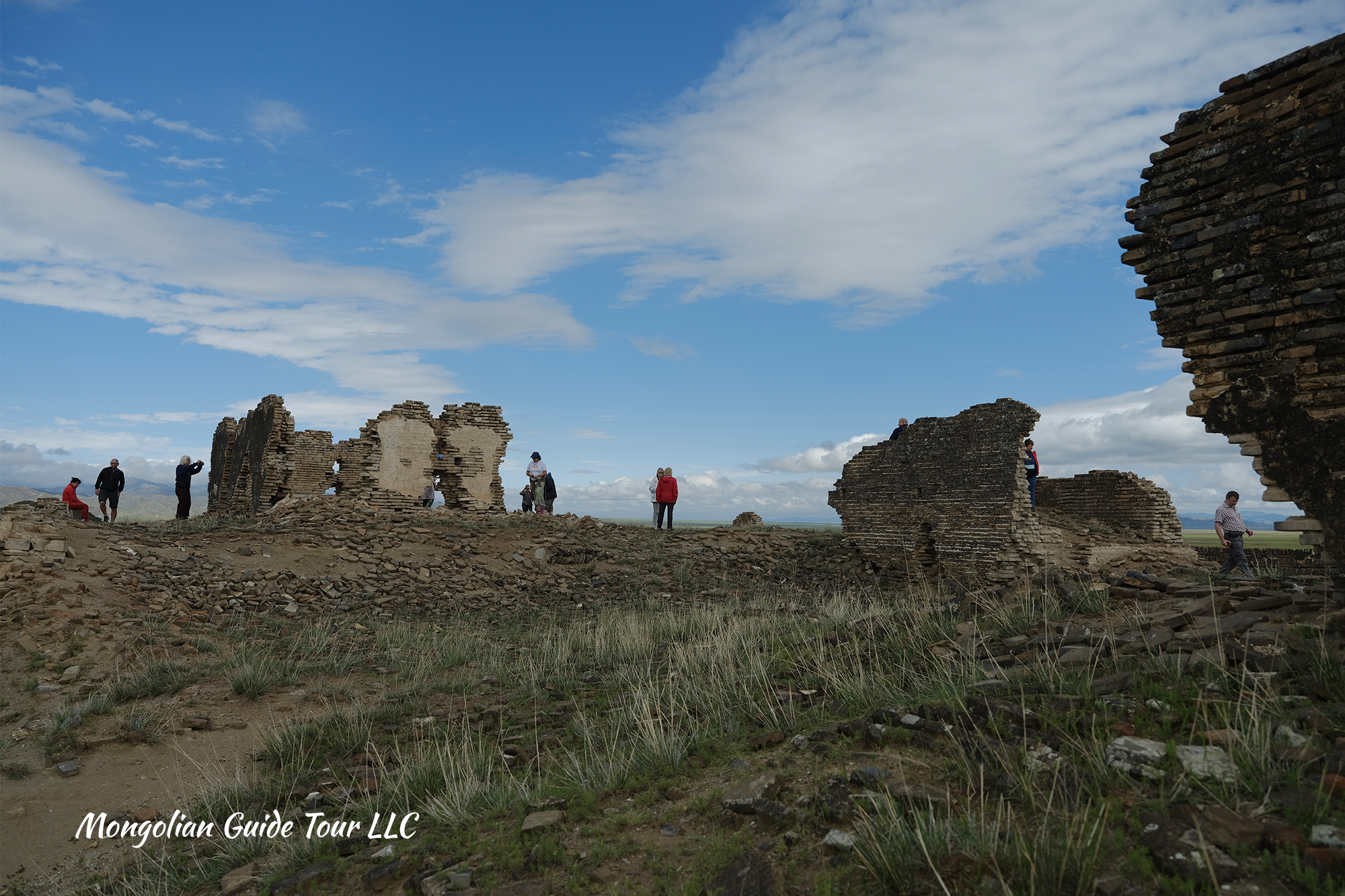
PRINCE TSOGT PALACE RUIN
The name of this monument is the White House of Tsogt (Tsogtyn Tsagaan Baishin). Mongolian medieval military figure and patriotic poet Tsogt Taij’s Palace ruin is located in the Tuul river valley at the foot of Khaldunzurkh mountain, 220 km from UB city and 25 km northeast of Chin Tolgoi wall in Bayannuur sum area of Bulgan province. It is said that Prince Tsogt built totally 6 palaces and temples over 17 years. One of them was a palace called "Setgeshgui Chandmani (Inconceivable precious)" which was built with a library and a school containing a rich collection of scriptures dedicated to his mother, Queen Made Taigal (Chintaihu). The prince himself lived in the palace. Therefore, it was called "Tsogt's Palace" or "Tsogt's White Castle", etc. Now the palace remains in ruins.
At that time, the palace had several small walls on the outside, similar to the architecture of the ancient Kharkhorum city. It had a Chinese tile roof, several rooms, ornate decorations, and a door on the eastern wall. According to the studies made in the vicinity of the ruins, numerous people lived around the palace as there were bountiful traces of settlements around it. To the east of the palace is a stone turtle on a low hill, similar in design to the stone turtle monument at Kharkhorum. The locals now call that hill as "Turtle Hill".
A stone stele on a high stone platform that remained intact was found at 200 meters from the west of the Tsogt Taij castle ruin. The monument contains 48 lines of Tibetan inscriptions and 23 lines of Mongolian inscriptions, which briefly mention the lineage of Tsogt Taij, the structure of the white palace, the location of the idols and gods, and together with the brief history of Buddhism. Also the stone stele erected near the Castle tells us that between 1601 and 1617 there were 6 monastery buildings also built in the vicinity, including the “Setgeshgui Chandmani” temple. The stele inscription further tells the exact dates as "on the south side of the mountain known as the Khaldud zurkhen (Heart of the Khaldud) and on the beautiful west bank of Tuul River, from the 15th of the month of Cuckoo month (first month of the summer) of the Iron Ox year, starting from the “Setgeshgui Chandmani”, total six temples were built for seventeen years and completed in 1617 in the Cuckoo month of fire snake year”. Between 1627 and 1630, the buildings of the White Palace were repeatedly affected by the wars among the aristocrats and could not restored. Later, only the left ruins taken under the state protection in 1971.
In 1889 and 1895, researchers led by Tsarist Russian scholar D.A.Klements examined the ruins of Tsogt Palace and wrote the first academic description. Further, in 1894, the German scholar Georg Huth published the Mongolian and Tibetan inscriptions of the stele along with a German translation. Later, in 1933-1934, the Soviet-Russian archeologist D.D.Bukenich investigated the area and carried out small excavations and interpreted the contents of the stele. He also found the stones for grinding grain and irrigation ditches in the vicinity, which were clear evidence of agricultural development of that period. Also, It was revealed that Tsogt Palace was built in the basement of an old building, and the lower part of the wall was made of stone while the upper part was made of bricks and was covered with colored Chinese-style roof tiles. Through the study project of the National team of the Institute of History and Archeology in 2017-2018, religious artifacts such as clay statues of gods, neck ornaments of the god, potteries, and building parts with pattern decoration of dragons and flowers were discovered supporting the idea of its use as a monastery for Buddhist activities. The research also found that the roof tiles of the palace were similar in terms of material and carving to the roof tiles found in Kharkhorin.
In 2011, D. Budsuren, a professor at the Institute of Railway, completed his doctorate dissertation under the topic "Research of historical documents related to Tsogt Prince". He considered that four inscriptions relevant to Prince Tsogt, should be highlighted in her research thoroughly. So, the first of them was the Duutyn black stone inscription in the Delgerkhaan Sum area of the Tuv aimag (Central Province) which remains 17 lines and 7 stanzas poetry written by Prince Tsogt. In the inscription, he improvised the poem as he missed his aunt Khaluut while he was doing hunting in the Khangai Khan mountain. So, he climbed to the top of the mountain and told his poem while looking to the east where his aunt lived. One of his followers, Erkh Khia, who was traveling with him took note of the poem. Three years later, in 1624, Daichin Khia and Guenbaatar engraved the poem on the rock cliff. It is a classic example of Mongolian literature and philosophical poetry of the XYII century. The second one is a stele with Mongolian and Tibetan inscriptions which is located 200 meters from the Tsogt White Castle. Thirdly, 25 kilometers downstream from the Tsogt White Castle, in the area of Zaamar Sum of the Central Province, an inscription written in four languages: Lanz, Tibetan, Nangiad, and Mongolian. Fourthly, in the Erdenedalai sum area of Dundgovi province, Amar Khia’s inscriptions, composed in the above four languages, and the content is the same version as Duutyn rock inscriptions. Therefore, these rock artworks confirm that Prince Tsogt was not only a political figure but also an enlightener and highly literate philosopher of the time.
PRINCE TSOGT: Prince Tsogt was born in 1581 as a son of Major Baarai who was Chinggis Khan’s Golden Lineage descendant Gersenz’s successor. He was one of the most educated and intelligent people of the time, learned Mongolian script by home-schooling since his childhood, and was a translator, poet, and military figure. He was a follower of the Red Hat Sect (Nyingma Sect) of Buddhism and a consistent supporter of Tsakhar's Ligden Khan policy. As a strong nationalist for the independence of the country commanding 40,000 soldiers under his flag, his military role was immortalized in Mongolian history. In fact, in the early 17th century, the Mongol Empire has largely broken up and he was persecuted by the aristocrats who followed the Manchus. Therefore, Prince Tsogt had no other way but to leave the country in 1630 and came to Khukh Lake (Blue Lake) to join Ligden Khan. They together fought against the Manchus and Prince Tsogt was killed on the battlefield in 1637. According to the historical sources such as “Yellow Chronicle” and “Asragch’s Story” mentioned that Prince Tsogt had three queens and five sons. Nowadays, a horse statue of Tsogt Prince was built in the central square of Bulgan Province and was named after him.


